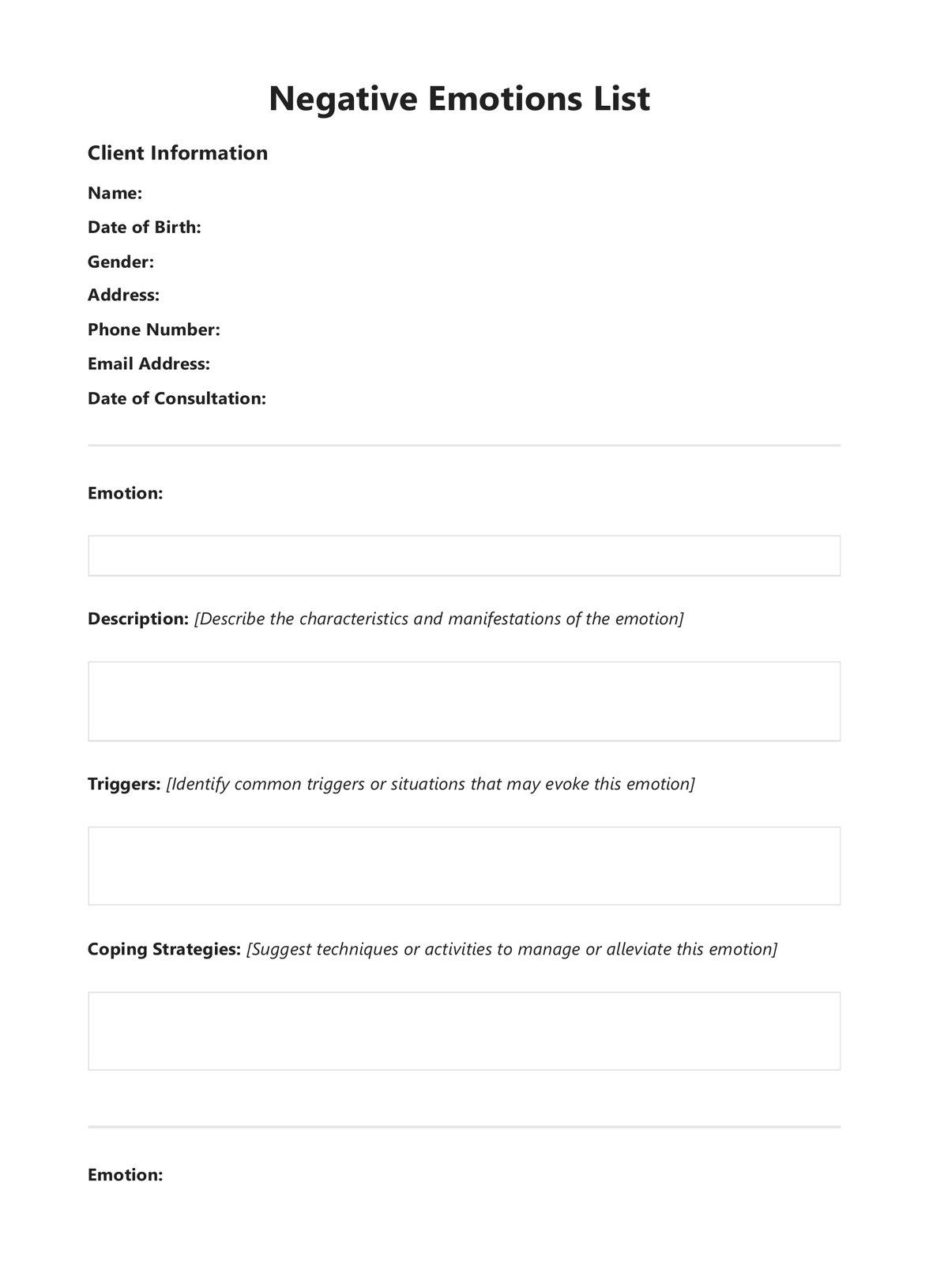Using a Negative Emotions List can help you clarify your emotions, promote self-awareness, and provide a starting point for exploring and managing your negative emotional experiences effectively. It can also facilitate communication with therapists, counselors, or support groups, enabling more focused discussions.

Negative Emotions List
Negative emotions are normal in life. Learn about the most common negative emotions, how to cope, and when to seek professional help.
Negative Emotions List Template
Commonly asked questions
A Negative Emotions List can benefit you by enhancing self-awareness, promoting emotional intelligence, validating your experiences, guiding coping strategies, and providing a sense of normalizing your negative emotions. It can be a valuable tool in personal growth, therapy, coaching, and educational settings.
While a Negative Emotions List is not a direct method for regulating emotions, it can facilitate the process. By identifying and understanding your emotions through the list, you can gain insights into triggers, patterns, and potential coping strategies associated with specific emotions, which can support you in developing practical emotional regulation skills.
EHR and practice management software
Get started for free
*No credit card required
Free
$0/usd
Unlimited clients
Telehealth
1GB of storage
Client portal text
Automated billing and online payments











